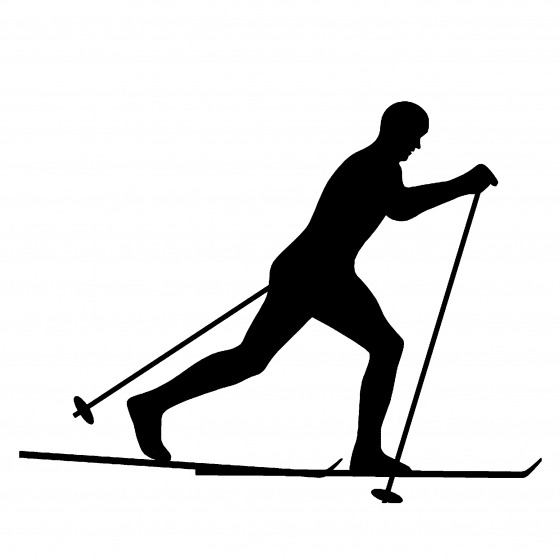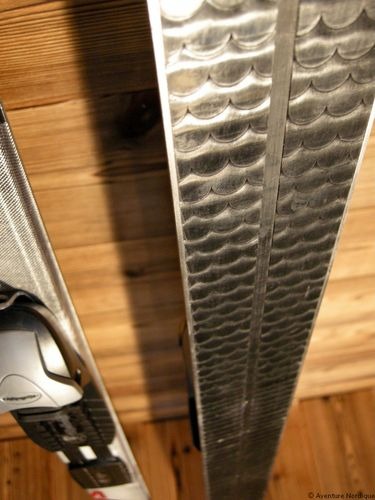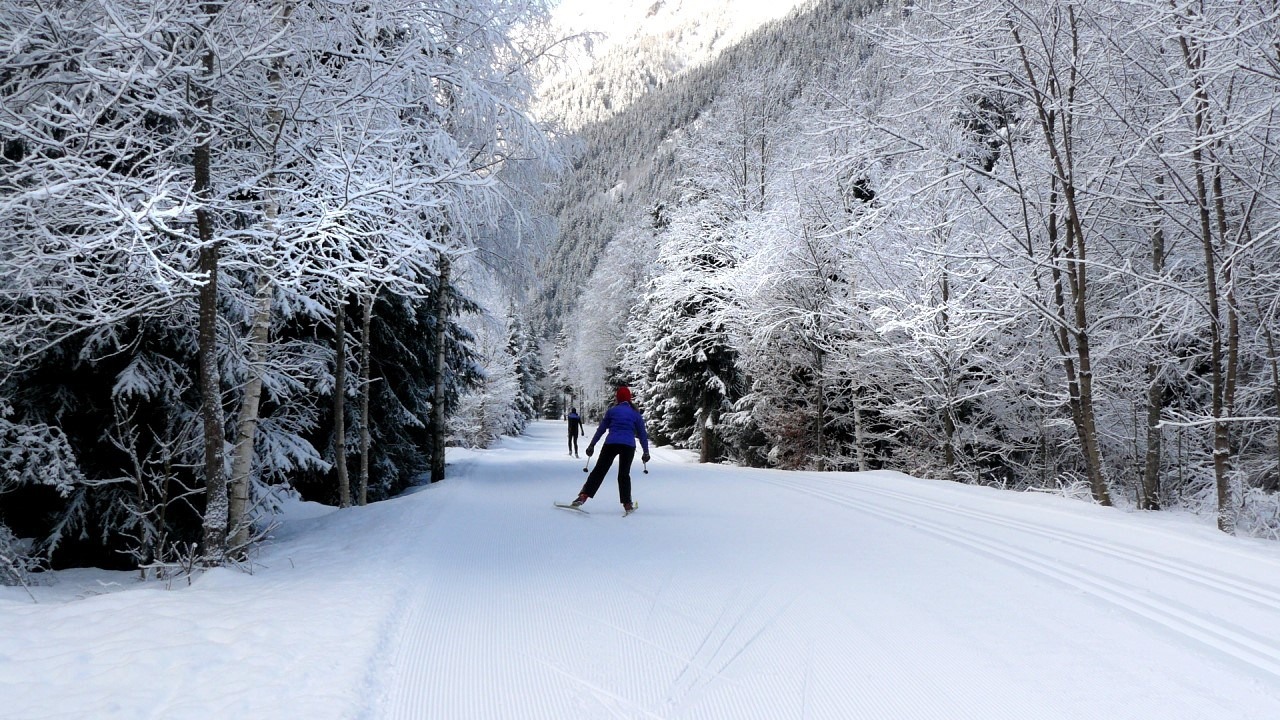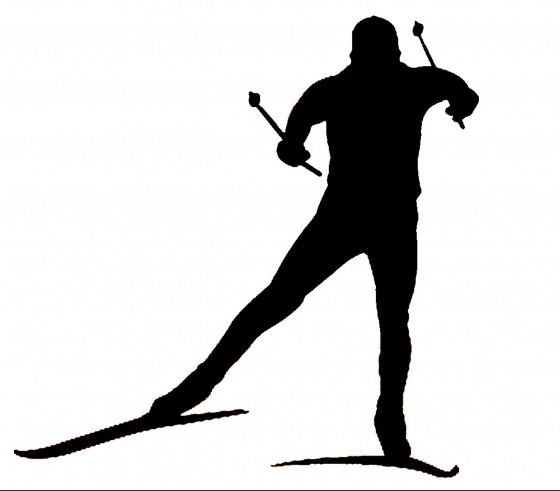We use cookies to ensure you get the best experience on our website. More Info.
How to chose my cross-country skis?
To choose the right pair of cross-country skis, you must take into account your size, your weight and your ski level which will directly influence your purchase. You will also have to choose the style you want to practice: classic or skating.

What material should I choose if I want to practice the classical or skating style?
The classic style is practiced in parallel rails in the form of a sliding step.
The first important thing when choosing your skis is to determine your anti-recoil system.
Skis without waxing (no wax)
Waxless skis have scales or sealskin in the grip area.
Flake skis are especially suitable for hikers for whom the priorities of gliding are less important than to spend in the wilderness. These skis are generally a little wider and have a fairly flexible tension. They can also be used off the prepared track.
Support in the grip area can also be provided by a seal skin. Its properties are the same as for touring skis. In most snow conditions, the grip and gliding properties of skis with sealskin are better than those of flake skis.
Waxing ski
Waxing skis do not have an anti-recoil system. To allow optimal grip, these skis must be treated with a special anti-recoil wax in the grip area. To do this, a different wax is used depending on the temperature and snow conditions. This requires a little time and experience. A well prepared ski to wax is the fastest ski and gives the best impression of gliding. Waxing skis are rather intended for a sporting use. They are therefore narrower than flake skis and have a larger and harder tension arc. We therefore recommend these skis to ambitious or technically experienced skiers.

- - The restraint wax. This system is ideal for sliding specialists. It is certainly the best choice. In fact, the quality of gliding is far superior to other types of classic skiing and its grip remains excellent whatever the snow conditions. On the other hand, using this type of ski necessarily involves the purchase of waxing products and a more expensive choice.
What material to choose if I want to practice skating style ?
In skating, the skis have more rounded tips and are not equipped with an anti-recoil system to promote maximum gliding. It is much more manageable and also shorter than its classic counterpart.
Skating skis have a continuous gliding zone. They must slide well and be stable in the pipe. Light skis are particularly advantageous here because of the lateral movement of the skating technique. Skating skis have a lower tip (less mass) and a harder continuous tension arc than conventional skis. They also have a more rigid twist.
Skating skis are a little shorter than classic skis. The main lengths range from 175 to 185 cm for the ladies, from 185 to 195 cm for the men. The simple rule is 5 to 10 cm more than the size.
The body weight and the tension of the ski must also be optimally adapted with skating skis.
What size of cross-country skis should I choose?
The length of the cross-country skis is chosen according to the size of the skier but also the weight. To be even more precise, you must also choose the hardness of the ski. But at Sportmania, we have chosen hardness for you. We have selected medium skis which are less specific to the skier but also to the snow.
Here is a summary table of sizes:
Size guide for classic style
| Skier size | Weight of the skier | Ski size |
|---|---|---|
| >190cm | 70Kg - 90Kg et + | >205cm |
| >170cm | 65Kg - 85Kg | > 200cm |
| >160cm | 50Kg -65Kg | > 190cm |
| >150cm | 40Kg -55Kg | > 180cm |
Size guide for skating style
| Skier size | Weight of the skier | Ski size |
|---|---|---|
| >190cm | 70Kg - 90Kg et + | >190cm |
| >170cm | 65Kg - 85Kg | > 180cm |
| >160cm | 50Kg-65Kg | > 175cm |
| >150cm | 40Kg-55Kg | > 175cm |
What are the specific characteristics of cross-country skiing?
The structure
It can be of the monohull or honeycomb type. In the first case, also called "CAP", it is the shell which structures the ski, which gives it its tone. The interior is either foam or honeycomb style, for a perfect blend of strength and lightness. Carbon fiber reinforcements are sometimes added to improve the rigidity of the ski without weighing it down. Finally, the camber of this type of ski is generally more toned. Most cross-country skis are built using the “CAP” method.
In the case of a sandwich-built ski, the core of the structure is made up of a hollowed-out wooden core (more solid and guarantees a more durable camber) or foam. This part is then surrounded by several layers of glass fiber in strips. Most low-end skis adopt this manufacturing method.
The base
Generally made of plastic, it can also contain graphite (high-end skis), which reduces the presence of static electricity and improves gliding, especially on dry, dirty or particularly cold snow.
It can have a central groove or two small ones for the stailité of the ski, and the sole is structured to evacuate the moisture which arises between the snow and the sole, but certain models can be grooved to measure to adapt the sole to needs or specific types of snow.
The sidecut
This is the shape of the ski, seen from above. It can be wasp size (wide tip and heel, narrow foot), parallel edges (classic cross-country skiing) or delta (tip slightly wider than the heel).
Touring ski enthusiasts generally opt for a ski with zero lateral profile (with parallel edges) while those who practice off-piste skiing have an advantage in choosing a ski with higher lateral profile (wasp or delta size), this which facilitates turns downhill and improves lift. For skating, skis can display a lateral profile slightly hollowed out under the boot.
The camber
It’s the curved shape of the ski when you look at it from the side. It corresponds to the flexibility of the ski, according to its ability to resist crushing under the weight of the skier. It varies according to the type of ski practiced and the snow conditions. It must allow a good compromise between gliding and propulsion: with a balanced camber, the part of the sole located under the shoe (retention zone, or grip zone) must touch the snow during the impulse but be lifted during slips. Training skiers and more athletic skiers will choose skis with a stiffer camber, to give spring to each pulse.

The skis used for the alternative pitch (the classic method of skiing) have a double camber: that of skiing in general and that of the restraint zone. It is this second camber that prevents the retention zone from touching the snow when sliding. On the other hand, the skis used for skating have only one camber because they do not have a retention zone. Besides, skis with too soft camber quickly become boring to use for skiers who progress quickly.
In any case, the weight of the skier is very important here because it determines the degree of camber of the ski, in conjunction with its length. Finally, off-piste skiers must take into account the additional weight they will carry on their shoulders, in their backpacks, if applicable.
The lenght
To determine it, some consider the size, physical condition and technical level of the skier, but only the weight of the latter really matters. To choose his skis, the skier must not completely crush the retention zones when he distributes his weight on the two skis. He must also be able to touch the ground when he concentrates his weight on a single ski.
In general, it is recommended to obtain skis that correspond at least to the size of the skier. Shorter skis are sometimes offered to encourage rapid learning of cross-country skiing, while longer skis allow you to play on the flexibility of the camber.
Off-piste skiers will prefer longer skis for large areas (for lift) but shorter if they plan to ski in the forest (for maneuverability). Finally, shorter training skis behave better on hard snow, while it is better to choose longer skis in soft snow.

Choose the right poles: how to choose the size of cross-country ski poles?
The choice of stick is very important in cross-country skiing. If it is too short or too long you will find it very difficult to ski properly.
* A classic pole must stop at the shoulder, it generally corresponds to the size of the skier minus 30cm. We also use a mathematical formula to buy a stick: size * 0.83
* A skating stick will be longer and will stop at the chin. It corresponds to the practitioner's height minus 20cm. The mathematical formula used will this time be size * 0.89
Manufacturers use different materials for sticks:
Aluminum which is the entry level gives a heavy but also solid material. The carbon fiberglass composite is lighter but less rigid.
The best possible choice is the carbon stick, very solid, rigid and light, it offers the best compromise but costs one more expensive than the others.
| Skier size (in cm) | Poles lenght (in cm)Skating | Poles lenght (in cm)Classic |
|---|---|---|
| 195 | 175 | 165 |
| 190 | 170 | 160 |
| 185 | 165 | 155 |
| 180 | 160 | 150 |
| 175 | 155 | 145 |
| 170 | 150 | 140 |
| 165 | 145 | 135 |
| 160 | 140 | 130 |
| 155 | 135 | 125 |
| 150 | 130 | 120 |
| 145 | 125 | 115 |
| 140 | 120 | 110 |
| 135 | 115 | 105 |
| 130 | 110 | 100 |
| 125 | 105 | 95 |
| 120 | 100 | 90 |
| 115 | 95 | 85 |
| 110 | 90 | 80 |
| 105 | 85 | 75 |
| 100 | 80 | 70 |

